Guitar basics: get to grips with funk rhythm guitar
Master the first principles of funk playing
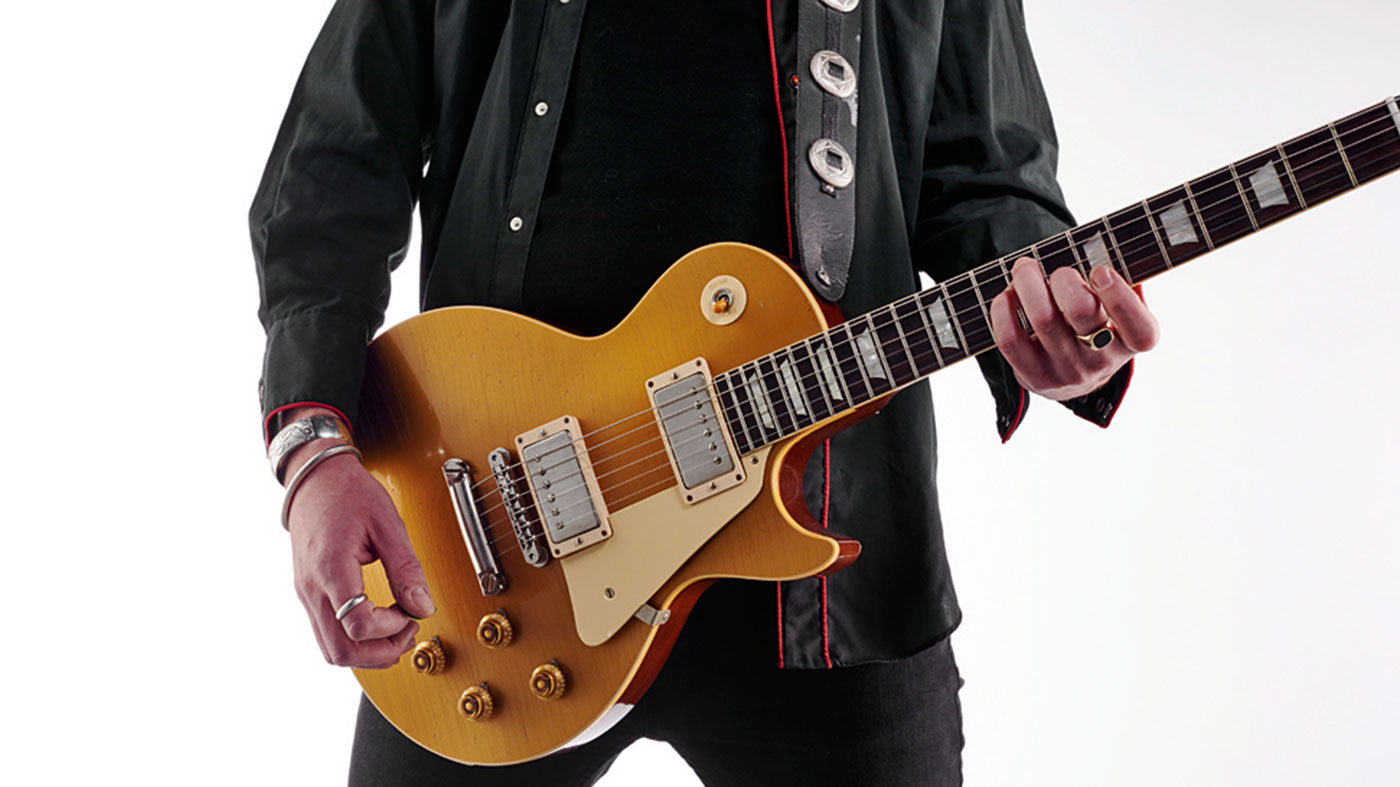
Improve your rhythm skills whatever style of music you’re into as we take a look at some funk essentials.
“Why do I need to learn funk guitar?”
Funk rhythms are used in many genres and your playing will improve if you try out the techniques. From folk or indie to rock and blues, funk guitar can be applied in lots of creative ways.
“Okay, I’m in! What do I need to know?”
Look at the section below where we talk about the most common element of funk: the ‘four notes per beat’ rhythm.
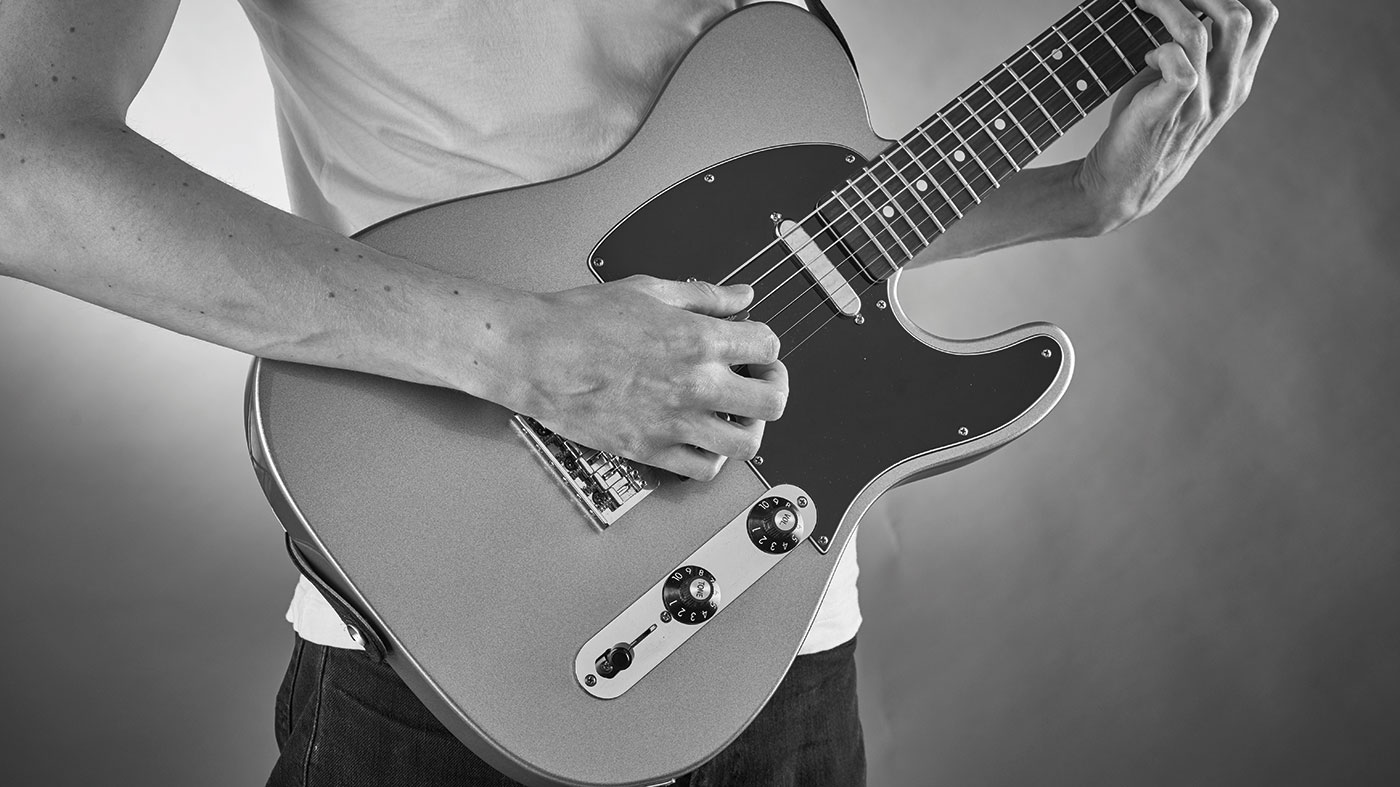
Develop your funk rhythm guitar grooves with these classic chord vamps
“Four notes per beat sounds complicated!”
If you’ve ever counted to four in time with a song you’re halfway there. This four-count is known as the ‘pulse’ or ‘beat’. Funk rhythms break these beats down into four shorter, faster bits - ie, four notes per beat. Typically, you’ll be strumming down-up-down-up and leaving out occasional pick strokes to mix things up.
“Can you recommend some tracks?”
Sure! The open line in Prince’s Kiss is a pure example of a four notes per beat strumming pattern. Nile Rodgers’ opening line in Chic’s Good Times uses this method. Also take a listen to the chorus in Monarchy Of Roses by the Red Hot Chili Peppers for some funky 16th notes.
“What do you mean by 16th notes?”
It’s a technical name for the ‘four notes per beat’ rhythm. There are four notes in each beat and four beats in each bar - hence the name ‘16th notes’. They are also called semiquavers.
“Got it. Can we start playing something?”
The below example outlines the sound of a 16th-note rhythm and how it appears in notation. Jam to the backing track – it’s about groove: the more you repeat it, the more you’ll get a feel for it.
Get the MusicRadar Newsletter
Want all the hottest music and gear news, reviews, deals, features and more, direct to your inbox? Sign up here.
“Okay. How can I make it more musical?”
Take a look at the tab examples. Here, the vibe comes from leaving out some of those 16ths, adding space and rhythm instead of playing in a continuous stream. In the second example we’re mixing up chords with a single-note line – a much used trick in funk. Remember to synchronise your down-up-down-up picking to the 16th-note rhythm for accurate timing.
Get the funk in!
Funk’s essential ‘four notes per beat’ rhythm explained…
1. Funk rhythms use a ‘four notes per beat’ pattern – a down-up-down-up picking motion gets you in the groove. The notation looks like this:
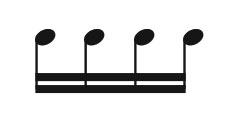
2. Sometimes, for a better layout, the notes are shown the other way up:
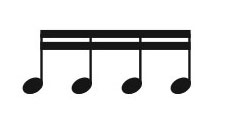
3. To get you started, we’ve recorded a simple exercise to jam to. It follows a down-up-downup strumming pattern, plus a final downstroke.
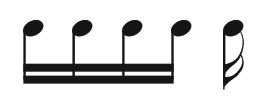
1. Basic strummed pattern
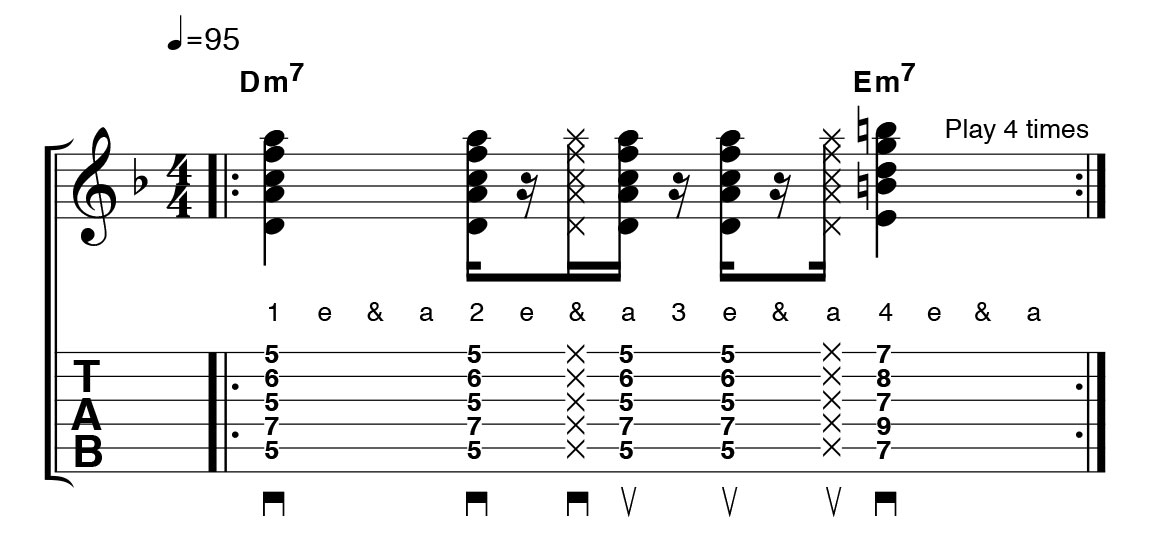
The four notes per beat rhythm can be vocalised as ‘1 e & a’. Use this to help you get a feel for where the chords fall in the 16th-note pattern.
2. Chords and funky single notes
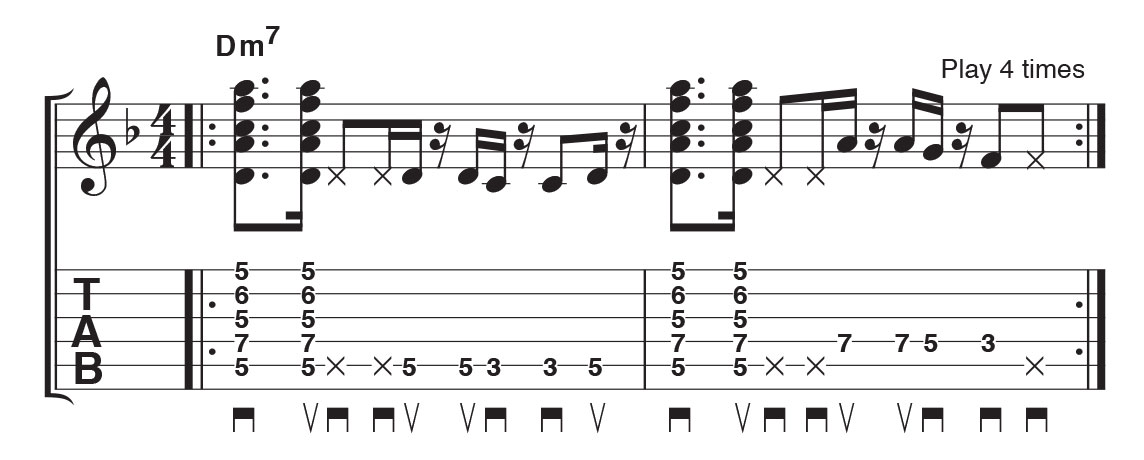
Treat this as two exercises: the opening chords and the single-note line - and work on each separately. Use an open position Dm7 shape if our barre chord is too tough.
MusicRadar is the number one website for music-makers of all kinds, be they guitarists, drummers, keyboard players, DJs or producers...
- GEAR: We help musicians find the best gear with top-ranking gear round-ups and high-quality, authoritative reviews by a wide team of highly experienced experts.
- TIPS: We also provide tuition, from bite-sized tips to advanced work-outs and guidance from recognised musicians and stars.
- STARS: We talk to musicians and stars about their creative processes, and the nuts and bolts of their gear and technique. We give fans an insight into the craft of music-making that no other music website can.










